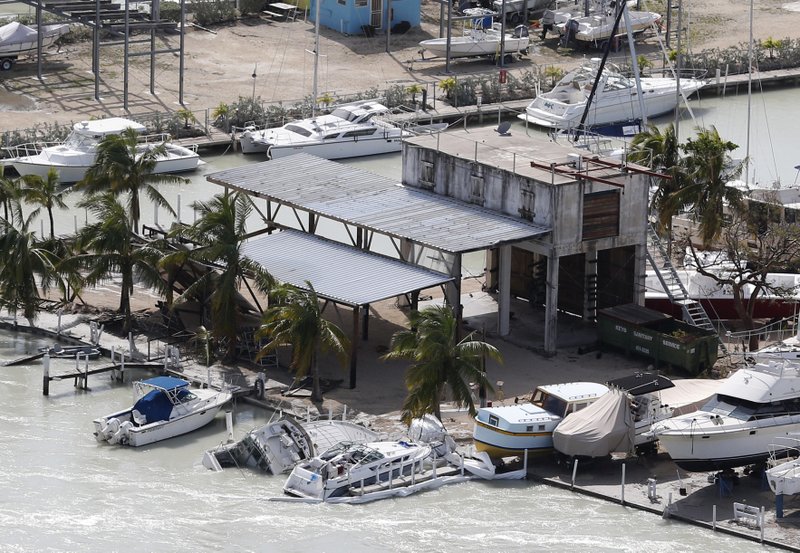
Authorities sent an aircraft carrier and other Navy ships to Florida to help with search-and-rescue operations Monday as a flyover of the hurricane-battered Keys yielded what the governor said were scenes of devastation.
“I just hope everyone survived,” Gov. Rick Scott said.
He said boats were cast ashore, water, sewers and electricity were knocked out, and “I don’t think I saw one trailer park where almost everything wasn’t overturned.” Authorities also struggled to clear the single highway connecting the string of islands to the mainland.
The scale of the damage inflicted by Irma on Sunday began to come into focus as the hurricane weakened to a tropical storm and finally pushed its way out of Florida, but not before dealing a parting shot by triggering severe flooding around Jacksonville in the state’s northeastern corner.
Around midday, Irma also spread misery into Georgia and South Carolina as it moved inland with winds at 50 mph.
One death in Florida, that of a man killed in an auto accident in the Keys during the storm, was blamed on Irma, along with one death in Georgia. At least 36 people were killed in the Caribbean as the storm closed in on the U.S. mainland.
The governor said that the damage along Florida’s southwest coast in such places as Naples and Fort Myers was not as bad as feared. But in the Keys, he said, “there is devastation.”
“It’s horrible, what we saw,” Scott said. “I know for our entire state, especially the Keys, it’s going to be a long road.”
He said the Navy dispatched the USS Iwo Jima, USS New York and the aircraft carrier Abraham Lincoln to help with search and rescue and other relief efforts.
During its rainy, windy run up the full 400-mile length of Florida, Irma swamped homes, uprooted trees, flooded streets, snapped miles of power lines and toppled construction cranes.
“How are we going to survive from here?” asked Gwen Bush, who waded through thigh-deep floodwaters outside her central Florida home to reach National Guard rescuers and get a ride to a shelter. “What’s going to happen now? I just don’t know.”
More than 6.5 million homes and businesses statewide remained without power, and 180,000 people huddled in shelters. Officials warned it could take weeks for electricity to be restored to everyone.
Irma was at one point the most powerful hurricane ever recorded in the open Atlantic, with winds up to 185 mph (298 kph). By Monday afternoon, its winds were down to 60 mph (97 kph).
The hurricane’s wrath in the Sunshine State extended the full length of the state and reached from the west coast to the east.
The Keys felt Irma’s full fury when it came ashore as a Category 4 storm with 130 mph (209 kph) winds.
Emergency managers there declared “the Keys are not open for business” and warned that there was no fuel, electricity, running water or cell service and that supplies were low and anxiety high.
“HELP IS ON THE WAY,” they promised on Facebook.



